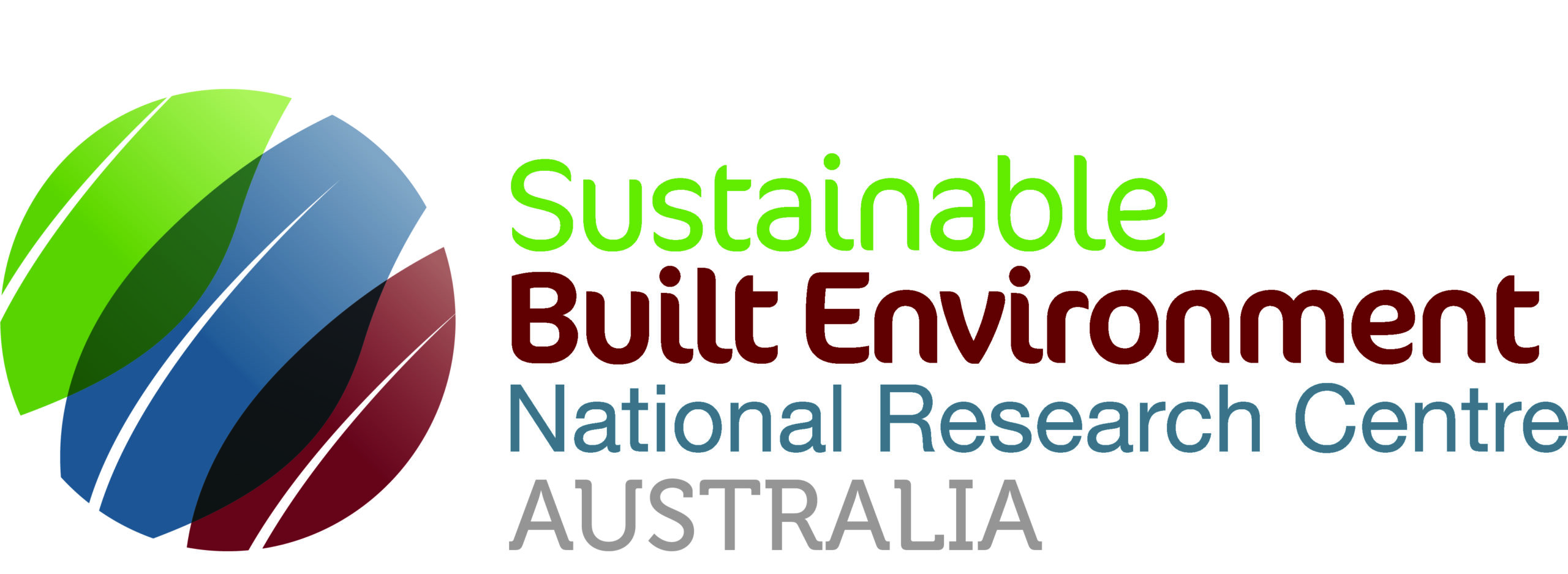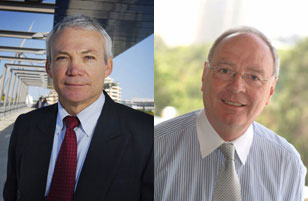Annual Report 2012
Our Centre aims to be an enduring world-class research and knowledge broker in sustainable infrastructure and building design, construction and management. In 2012 we came closer to achieving our mission, thanks to our members support, program and project leaders and the collaborative research teams involved in our three programs of activity:
- Program 1: Greening the built environment, led by Professor Peter Newman, Curtin University
- Program 2: Developing innovation and safety cultures, led by Professor Russell Kenley, Swinburne University of Technology
- Program 3: Driving productivity through procurement, led by Professor Robin Drogemuller, QUT.
The valuable research outcomes our projects delivered have largely been due to our strong focus on industry, government and research collaboration. Our Centre would not be able to continue growing without the commitment and support of our core partners and we thank you wholeheartedly: Curtin University; John Holland; NSW Roads and Maritime Services; Parsons Brinckerhoff; Queensland Departments of Transport and Main Roads, Housing and Public Works, and Local Government and Planning; Queensland University of Technology; Swinburne University of Technology; Western Australian Government agencies: the Department of Commerce (Building Commission), the Department of Treasury (Strategic Projects), the Department of Finance (Building Management and Works) and Main Roads WA.
Additionally, international participation (formally through Constructing Excellence UK; VTT Technical Research Centre of Finland; BRANZ in New Zealand; CIB – the International Council for Research and Innovation in Building and Construction; and informally through a variety of leading university and other research institutions) provides important global perspectives on our research as we share information and ideas to improve the quality of our research.
Centre highlights of 2012 include:
- We facilitated three successful ARC Linkage funding applications, and these projects are now underway:
- Greening procurement of infrastructure construction (Russell Kenley, Swinburne) – $340,000
- Leveraging R&D for the Australian Built Environment (Keith Hampson, QUT) – $235,000
- Diffusion of manufactured high performance green houses (Karen Manley, QUT) – $198,000
- Partnering with industry groups such as Built Environment Industry Innovation Council (BEIIC), buildingSMART, Australian Constructors Association (ACA), Australian Green Infrastructure Council (AGIC), Australian Procurement and Construction Council (APCC), Austroads, Civil Contractors Association (CCF), Engineers Australia (EA), Green Building Council of Australia (GBCA), Master Builders Australia (MBA), The Australian Workers Union (AWU), Construction, Forestry, Mining and Energy Union (CFMEU), the Office of the Federal Safety Commissioner and the Warren Centre for Advanced Engineering to ensure industry-focussed research outcomes and convene dissemination seminars.
- The project The Future of Roads has provided a valuable contribution to industry around ‘sustainable road infrastructure’, providing an extensively researched context to inform future innovation. The key findings include: capacity building to identify short term options to ‘reduce greenhouse gas emissions’ during design, construction, maintenance and operation on existing and future road projects; enhancing ‘sustainability reporting’ efforts; and on-going strategic consideration of the ‘risks and opportunities’ associated with current and future trends. These provide many benefits to industry and government including: improving strategic positioning; informing policy and management decisions; providing guidance on areas of specialisation; and understanding market gaps and arising business opportunities.
- The project Safety Impacts of Alcohol and Other Drugs in Construction has been the first scientific evaluation, at a national level, of the use of alcohol and other drugs (AOD) in the construction industry. The findings have fundamentally contributed to a greater understanding of AOD consumption rates, patterns of use and the associated levels of risk within the Australian construction industry. With a stronger grasp of the extent and severity of the problem, we are better equipped to understand the causes, impact and consequences of AOD within the cultural and operating context of the construction workplace – and importantly, how to respond effectively. A cultural change management program and implementation plan has been developed by the project team in consultation with project partners and industry stakeholders.
- The goal of the project Collaborative Object Libraries Supporting the Facility Lifecycle, in conjunction with industry partners Queensland Government Project Services and Natspec, was to provide a software implementation of an on-line product library that would provide the basis for a future national product library. The business case behind the project is that if there was a national product library that was on-line and free for users, then many of the issues with collaboration would be reduced. A solution to the technical problem of sharing library objects between software from different vendors is a method used in software engineering called ‘software transformations’. This method provides an automated system of mapping data and structures between different representations. Once established as a National Object Library this project will provide benefits across a range of industry participants.
Our challenge for our next three year phase, from 2013-2015, is to grow the value and impact of our applied research more deeply and broadly across Australia. We are pleased to announce we have been given a significant growth injection from our partners in Western Australia. Consequently our headquarters will relocate to Curtin University in Perth, Western Australia. Keith Hampson will maintain continuity as CEO and relocate to Curtin University, and John McCarthy will remain as Chair of the Board. Lauren Gubbin will also maintain important corporate administrative leadership for our Centre.
This move provides us with greater opportunities to grow by servicing the resources infrastructure sector, which will complement our existing activities in roads and building infrastructure – in which we have traditionally been acknowledged as a national and international leader.
We would like to take this opportunity to acknowledge the SBEnrc team who have contributed enormously over the last three years. In particular, Rick Darroch, who has provided financial management prudently and effectively. Also thanks to Sandy Cheung, Jo Waddell and Hana Nepia. I wish you well in your future endeavours.
As we move into our next phase, we look forward to maintaining our joint commitment and working with core members, project partners and other industry stakeholders growing the value of SBEnrc research for our national partners and our industry well into the future.













